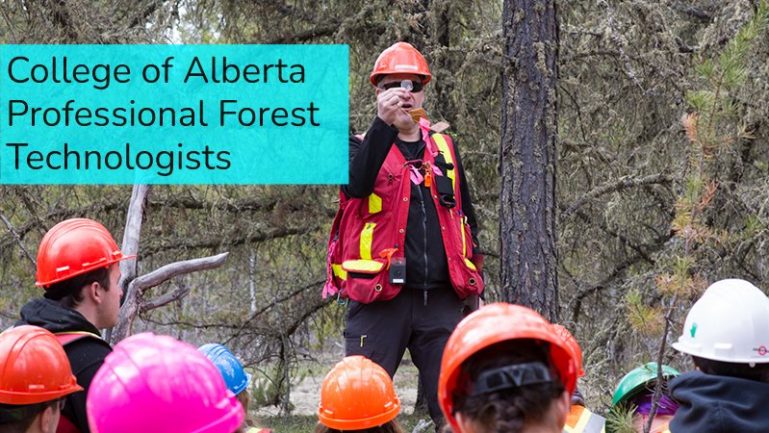College of Alberta Professional Forest Technologists: Guide

Forested areas have a variety of ecological systems that are carefully managed to ensure the long-term viability of their ecological assets. All Albertans may profit from and take pleasure in the trees that Alberta has to offer in terms of economics, society, and culture.
The College of Alberta Professional Foresters (CAPF) and the College of Alberta Professional Forest Technologists (CAPFT) merged on July 1st, 2019, to form the Alberta Association of Forestry Management Professionals (AAFMP). It regulates the province’s forest management professionals. So that all Albertans can benefit from thriving, long-lasting forests. This commitment to sustainability and innovation not only supports Alberta’s forests but also highlights how the expertise of forest technologists can be applied to emerging industries beyond traditional forestry.
Alternative Online Gambling Careers for Forest Technologists
While many forest technologists focus on traditional roles in forest management, their expertise in data analysis, resource planning, and sustainability can open doors to unexpected career paths. For instance, the online gambling industry is becoming more conscious of its environmental footprint, requiring professionals to optimize server infrastructure and integrate sustainable practices. Forest technologists, with their understanding of resource efficiency and long-term planning, are well-positioned to contribute to these efforts. This intersection of technology and sustainability provides unique opportunities to expand their career horizons while supporting responsible digital growth, as seen in well-rounded path to top-rated Ontario online casinos. The site features reviews of gambling sites for real money, a guide to playing at the best online casinos, and detailed sections on the benefits, bonuses, and unique offerings.
By embracing diverse applications of their skills, forest technologists uphold the core mission of sustainability and resource stewardship championed by the Alberta Association of Forestry Management Professionals (AAFMP).
Table of Contents
AAFMP Mission
Regulated members of the College of Alberta Professional Forest Technologists are responsible for important forest management obligations and represent the forestry profession. They serve as stewards of Alberta environment and sustainable resource development.
The Association of Alberta Forest Management Professionals is in charge of policing its members. As their primary responsibility, members are expected to look out for the best interests of the general public and adhere to the standards outlined below.

Maintain the Highest Possible Criteria in the Course of Forestry Work
In the best interests of Albertans, members of the legislature are required to demonstrate an appreciation of the value and worth of Alberta’s forests because the vast majority of the province’s woods are located on public land.
The profession of forestry is a difficult one that is also always being refined. Members work hard to manage any competing interests between economic development, ecological outcomes, and the need to support social and cultural values while simultaneously ensuring the long-term sustainability of the forests. This is done with the goal of ensuring that the forests will be around for future generations.
It is mandatory for members to act in accordance with any and all statutes and regulations that are applicable to the field of forestry. They also have to guarantee that the practice of forestry is founded on scientifically and ecologically sound information, as well as solid ecological principles.

Retain the Public’s Trust in the Forestry Profession and Industry
It is crucial to keep the public’s confidence in the profession, and one way to do so is to involve the public in conversations about issues relating to forest resources, forest regulations, and forest management techniques.
When rendering a professional opinion, it is imperative that the person in whose interest that view is being rendered, be made perfectly apparent. In order to support or disprove a certain opinion or perspective, relevant material must neither be manipulated in any way, nor should it be omitted.
AAFMP’s members are able to communicate with the general public in an open and forthright manner regarding the profession and the practice of forestry. They are also expected to positively spread awareness about the forestry profession and the practice of forestry.

Integrity and Competency Within the Level of Training and Experience
Forestry professionals use their specialized abilities and knowledge to the fullest extent of their capability and within the scope of their degree of competence, which is based on their prior experience and training.
Members are forbidden from giving advice or offering professional services unless they have the necessary level of expertise. They also continually improve their level of expertise across all facets of their professional lives.
Foster Growth in Forestry Practice
The members of the association are encouraged to look for opportunities to be actively involved in the development and promotion of the profession. In order to ensure greater advancement of the profession, members help one another by exchanging their professional experiences and recommendations for top practices.
AAFMP’s members actively participate in both continuing competence programs and the actual practice of forestry in order to fulfill their obligation to work toward the improvement of the forestry profession. They work toward increasing the competence, dignity, and reputation of the forestry profession while also providing active support for the promotion of the profession.
Moreover, foresters and forest technologists educate the general public, as well as other business colleagues, on the merits of professional regulation. They investigate and disseminate to one another innovative methodologies and techniques of emerging research and applications.

Forestry Operations with the Utmost Consideration for Respect, Health, and Safety
There are a number of dangers to be found in the forest, which creates potentially hazardous conditions. Forestry professionals do not carry out any plan if it is believed to put the health, safety, and welfare of those working in the forest, or any other users of the forest, in jeopardy.
Every single AAFMP member takes all necessary onsite and operational safety precautions, respect others, and is responsible for doing it in a professional manner. Unacceptable behavior, such as intimidation and harassment is not be permitted under any circumstances.
In order to protect the health, safety, and welfare of forest workers and other forest users, members exhibit effective safety practices and procedures and do not take any action that could put the general public in jeopardy.
Taking Part in Continuing Education and Career Development
Forestry members educate themselves on the most recent developments in the technical, professional, social, economic, and environmental aspects of the forestry industry.
The profession of forestry in Alberta requires an in-depth understanding of the environmental laws and policies that are currently in effect. Maintaining a grasp of both technical and policy issues is easier with the support of a membership in the association and active participation in educational institutions. Both formal and informal participation in continuing education programs is advantageous to members and serves to preserve the public interest.
The Association requires its members to continually enhance their level of knowledge, comprehension, and ability in relation to the field of forestry, as well as to achieve, at a minimum, the continuous competence criteria that have been established by the organization.
Forestry professionals consult with other members who are not experts in their particular field for the purpose of receiving training and guidance. This is done to guarantee that members’ advice and opinions are based on generally accepted standards of practice.

Strategic Profile of the Alberta Association of Forestry Management Professionals
In 2019, The Alberta Association of Forestry Management Professionals (former CAPFT – College of Alberta Professional Forest Technologists) has developed the guidance for the strategic plan 2019-2024. This plan is designed to serve as a roadmap for the strategy that the Association will employ as the new legislation governing forest management professionals is put into effect.
Goals of the Association
In the Canadian province of Alberta, the activity of practicing professional forestry is a regulated profession. The Regulated Forest Management Profession Act provides a definition of the profession of forestry and stipulates that individuals must be members in order to engage in the activity of practicing forestry within the province.
In addition, the Act specifies that the Association is responsible for managing and directing the activities, exercising the rights, powers, and privileges, and carrying out the responsibilities of the Association, as well as carrying out the responsibilities and powers granted to the Council by the Act and the bylaws.
The Association fulfills the following obligations:
- conducts its operations and exercises authority over its regulated members in a manner that both safeguards and serves the general public interest
- acts as a guide for the practice of the profession as well as a regulator of that practice
- is responsible for establishing, upholding, and enforcing standards of practice, registration, and ongoing competency for the practice of regulated professions
- carries out the activities of the Association in addition to performing other responsibilities and functions by using the powers granted to it under the Act
How Do You Become a Forester?

In order to become a forester in Alberta, you need to be a registered member of the Association of Alberta Forest Management Professionals. If you plan to engage in forestry activities on public lands, you are required to first register.
- What are the prerequisites of registration for professional foresters who have studied abroad?
Foresters, forest engineers, or graduates of associated natural resource management programs with an international education are required to:
1) Review the Application Guide for the Association of Alberta Forest Management Professionals and make sure they adhere to all of the procedures in the Pre-Registration Credential Assessment Process.
2) Register their profile and finish the online questionnaire provided by the AAFMP by clicking on the tab labeled “Apply for Registration.” They will also need to make contact with the registrar before submitting an application for a credential evaluation.
3) Put in an application for a Credential Assessment with the Forest Professional Regulators of Canada. It is necessary to check out the page under “Internationally Trained.”
4) Finish the online Credential Assessment process on the AAFMP site, including the submission of all relevant papers and payment of the costs.
5) Applicants who have gaps in their education or professional experience will receive direction on how to fill such gaps in their knowledge through additional activities. The applicant may be qualified for registration as a FIT if the differences are modest. Nevertheless, if the inadequacies are significant, upgrading will be required before the application can be considered for registration eligibility.
6) If an applicant is proficient in all areas, the AAFMP will assist them in completing the necessary mentorship periods, and policy, law, and ethics exams.
- What kinds of educational prerequisites must prospective Foresters in Alberta meet?
Both a Bachelor of Science in Forestry and a Bachelor of Science in Forest Business Management are available through the University of Alberta in Edmonton, which is located in Alberta. Visit the website of the Forest Professional Regulators of Canada to learn more about forestry degree programs that have been accredited.
Where can I take an English language proficiency test and what are the acceptable English tests?
There are no set standards for English proficiency that must be met in order to work in the forestry industry. Nonetheless, in order to be successful in the field, foresters need to have a high level of English proficiency in the areas of reading, writing, speaking, and listening. Visit English Language Proficiency Tests and Locations if you want to find out more about where you can take a test to determine your level of English proficiency in Alberta.
- What kinds of resources and assistance are accessible to foresters who have studied abroad?
Workplace communication groups are available through Directions for Immigrants and can assist you in integrating into the culture of the Canadian workplace. The purpose of the workplace communication organization known as Clear Communication for Business is to assist professionals with international educations in honing their ability to communicate effectively with their coworkers, superiors, and customers. You will spend one week learning the intricacies and standards of the Canadian corporate culture through role-playing exercises and hypothetical scenarios. Active listening, assertiveness, conflict resolution, issue solving, and working together as a team are some of the topics covered in this course.
